15 years one-stop China custom CNC machining parts factory
 328 |
Published by VMT at Aug 19 2025 | Reading Time:About 6 minutes
328 |
Published by VMT at Aug 19 2025 | Reading Time:About 6 minutes
Selecting the right 6061 aluminum temper—whether T6, T651, or T6511—can be confusing. Each temper has different mechanical properties, manufacturing processes, and dimensional stability, and choosing the wrong one can lead to higher machining costs, reduced part performance, or even project delays.
Imagine investing in 6061 CNC machined parts only to discover that your chosen temper can’t handle the required load, warps during machining, or suffers premature corrosion. Not only does this waste material and labor, but it can also jeopardize the quality and reliability of your final product. Many businesses overlook these differences and end up with expensive mistakes that could have been avoided with better upfront knowledge.
By understanding the 6061 aluminum temper properties of T6, T651, and T6511, you can select the right option for your project’s strength, dimensional stability, and corrosion resistance needs. This guide will compare their properties, costs, and applications—so you can work with CNC machining factories confidently and avoid costly surprises.
The key difference between 6061 aluminum T6, T651, and T6511 is stress relief and dimensional stability. T6 is heat-treated and naturally aged, T651 is stress-relieved by stretching, and T6511 is stress-relieved by stretching and minor straightening. These differences affect machinability, performance, and cost for aluminum CNC machined parts.
Understanding the differences between these 6061 aluminum tempers is more than just a technical detail—it’s the foundation for ensuring your parts meet exact specifications without costly surprises. In the sections ahead, we’ll break down each temper’s mechanical properties, manufacturing process, cost considerations, and application suitability, so you can choose with confidence for your 6061 CNC machined parts project.
Tempering is a controlled heat treatment process that tailors the mechanical and physical properties of 6061 aluminum to match specific application needs. In CNC machining, tempering directly influences strength, hardness, ductility, corrosion resistance, and dimensional stability—factors that determine whether your parts will perform reliably in service.
For 6061 aluminum CNC machined parts, the most common tempers are T6, T651, and T6511. All three start from the same 6061 alloy composition, but their differences come from post-heat-treatment processing. T6 is solution heat-treated and artificially aged to reach maximum strength. T651 is T6 with added stress relief through stretching, reducing internal residual stress. T6511 undergoes the same stress relief as T651 but also has minor straightening to meet strict dimensional tolerances.
Why is this important? Because choosing the wrong temper can lead to problems like part distortion during machining, insufficient strength for load-bearing applications, or overpaying for properties your project doesn’t need. Understanding 6061 aluminum temper properties ensures you get the best balance of cost, performance, and machinability.
Tip: When requesting quotes from CNC machining factories, specify both the alloy (6061) and temper (T6, T651, or T6511) to avoid miscommunication and ensure accurate pricing.
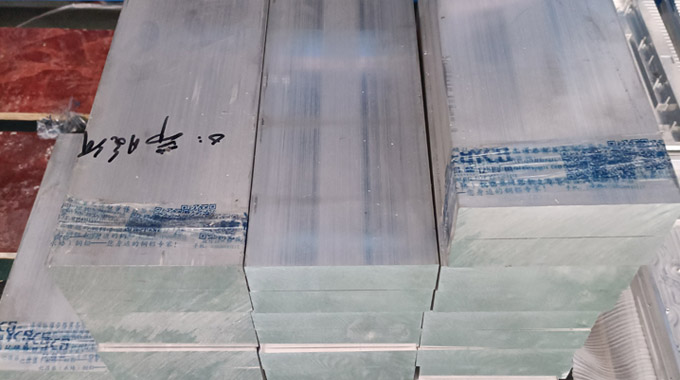
Although 6061 aluminum T6, T651, and T6511 come from the same base alloy, their tempering processes create distinct performance profiles. The main differences lie in stress relief, dimensional stability, and final machinability—critical factors for achieving precision in aluminum CNC machined parts.
T6 temper is achieved through solution heat treatment and artificial aging, giving it maximum tensile and yield strength. However, T6 aluminum retains some internal stresses from the heat treatment process. This means that during CNC machining, especially in high-precision or thin-walled parts, T6 may experience slight warping or distortion.
T651 shares the same heat treatment as T6 but adds a stretching process—usually between 1.5% and 3%—to relieve internal stresses. This stress relief greatly improves dimensional stability, making T651 better suited for precision machining where tolerance consistency is critical.
T6511 follows the same treatment as T651 but undergoes minor straightening to meet specific shape tolerances, such as in extrusions. This combination of stress relief and precision straightening makes T6511 ideal for applications requiring both structural performance and accurate geometry.
In short:
Tip: If your project requires long, thin components, T6511 can save time and cost by reducing secondary straightening operations after machining.
The 6061 aluminum alloy is versatile, and its properties change significantly depending on the temper. Each temper—O, T4, T6, and T651—has unique mechanical characteristics, processing steps, and ideal applications. Understanding these differences is critical for ensuring your 6061 CNC machined parts meet both performance and cost requirements.
6061-O is the fully annealed condition, offering maximum ductility but the lowest strength. It’s easy to form and bend, making it ideal for complex shapes or parts requiring extensive forming before machining. However, its lower strength means it is less suited for high-load applications.
6061-T4 is solution heat-treated and naturally aged. It offers a good balance of strength and ductility, making it a common choice for parts that require forming followed by further aging to increase hardness. It’s easier to machine than O temper but not as strong as T6 or T651.
6061-T6 is solution heat-treated and artificially aged to achieve maximum strength. This makes it excellent for structural applications but introduces residual stresses that can cause distortion during machining, especially in thin or intricate parts.
6061-T651 is essentially T6 that has been stress-relieved by stretching. This process significantly improves dimensional stability, making it ideal for precision machining where tight tolerances are critical.
In short:
Tip: For projects requiring both high strength and precise tolerances, T651 is usually the best investment, reducing the risk of rework and wasted material in CNC machining services.
6061 Aluminum Temper Properties Comparison
| Temper |
Heat Treatment Process |
Strength Level |
Ductility/Formability |
Stress Relief |
Typical Applications |
CNC Machining Considerations |
| 6061-O |
Fully annealed, no hardening | Lowest | Highest | None | Deep drawing, bending, complex forming before machining | Excellent for forming; may require hardening for final use |
| 6061-T4 |
Solution heat-treated, naturally aged | Medium | Good | Minimal | Automotive panels, aerospace components requiring forming then aging | Easier to machine than O; final aging can improve hardness |
| 6061-T6 |
Solution heat-treated, artificially aged | Highest | Lower | None | Structural components, high-strength applications | Strong but may distort in thin or intricate parts |
| 6061-T651 |
T6 plus stress-relief by stretching (1.5–3%) | Highest | Lower | Excellent | Precision-machined parts, aerospace tooling, molds | Best for tight tolerances; reduces warping during machining |
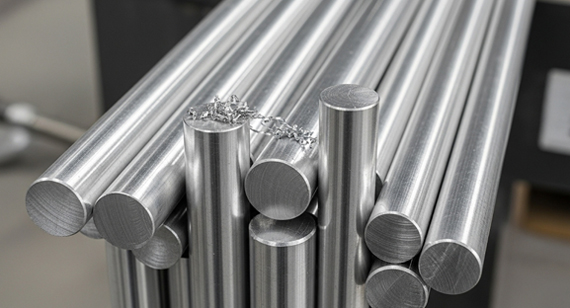
The primary differences between aluminum T6, T651, and T6511 tempers come from their heat treatment and post-treatment stress-relief processes. While they share the same 6061 alloy chemistry, the manufacturing steps they undergo directly affect their mechanical properties, dimensional stability, and suitability for aluminum CNC machined parts.
T6 Process: The 6061 aluminum is first solution heat-treated—heated to a specific temperature to dissolve alloying elements into a solid solution—then quenched rapidly, usually in water. This is followed by artificial aging at a controlled temperature to maximize hardness and strength. The result is high mechanical strength but with internal stresses that can cause slight distortion during CNC machining.
T651 Process: This begins with the same T6 heat treatment, but an additional stretching operation (1.5–3% elongation) is performed to relieve residual stresses. This significantly improves dimensional stability, making T651 preferred for applications requiring tight tolerances and consistent machining accuracy.
T6511 Process: Similar to T651, this temper also undergoes stretching for stress relief. However, after stretching, the material is straightened to meet precise shape tolerances—commonly for extruded products. This combination makes T6511 ideal for long profiles, rails, or structural components that must maintain both strength and geometry after machining.
Manufacturing Process Comparison: Aluminum T6 vs. T651 vs. T6511
| Temper |
Heat Treatment Process |
Stress Relief Method |
Additional Processing |
Key Resulting Properties |
Typical CNC Machining Applications |
| T6 |
Solution heat-treated → quenched → artificially aged | None | None | Maximum strength, potential residual stresses | Structural parts, aerospace frames |
| T651 |
T6 process → stretched 1.5–3% to relieve internal stresses | Stretching | None | High strength, excellent dimensional stability | Precision tooling, tight-tolerance components |
| T6511 |
T6 process → stretched 1.5–3% → straightened to meet shape tolerances | Stretching + straightening | Minor straightening of extrusions | High strength, stress relief, improved geometry control | Long extrusions, aerospace rails, precision frames |
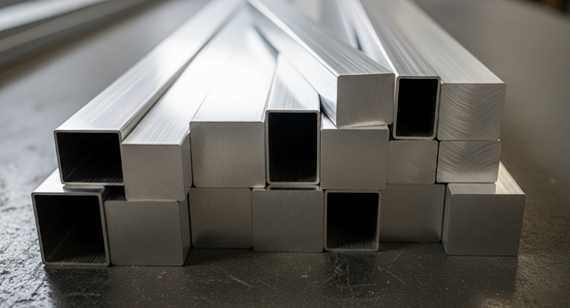
Mechanical properties are a decisive factor when selecting between aluminum T6, T651, and T6511 tempers. While all three share the same base alloy composition, subtle differences in post-heat-treatment processing can lead to variations in tensile strength, yield strength, hardness, ductility, and machinability. For manufacturers ordering aluminum CNC machined parts, these property differences can mean the distinction between consistent quality and costly rework.
T6 Mechanical Properties
6061 aluminum T6 offers maximum strength among the three tempers, with a typical ultimate tensile strength of around 290 MPa (42 ksi) and yield strength of 240 MPa (35 ksi). Its Brinell hardness averages 95, making it well-suited for load-bearing structures. However, T6 retains residual stresses from heat treatment, which can cause dimensional changes during CNC machining—especially in thin sections or complex geometries.
Tip: For high-strength parts where slight dimensional changes are acceptable, T6 is cost-effective and widely available in CNC machining factories.
T651 Mechanical Properties
6061 aluminum T651 has nearly identical tensile and yield strength to T6 but with enhanced dimensional stability thanks to its stretching process. This stress relief minimizes warping during machining, making it a preferred choice for precision components. Its machinability is excellent compared to T6 when tight tolerances are critical.
Tip: If you need both T6-level strength and consistent machining accuracy, T651 will reduce the need for secondary straightening or remachining.
T6511 Mechanical Properties
6061 aluminum T6511 mirrors T651 in mechanical performance but gains an advantage in geometric precision due to a straightening process after stretching. This makes it ideal for long extrusions and complex profiles where shape accuracy is critical after machining.
Tip: For long aerospace rails, marine frames, or structural extrusions, T6511 minimizes both stress-related distortion and geometry deviation, reducing finishing costs in CNC machining services.
Mechanical Property Comparison: Aluminum T6 vs. T651 vs. T6511
| Temper |
Tensile Strength (MPa / ksi) |
Yield Strength (MPa / ksi) |
Elongation (%) |
Hardness (Brinell) |
Machinability Notes |
Best Use Cases |
| T6 |
~290 / 42 | ~240 / 35 | 8–10 | ~95 | Good machinability; possible distortion in thin/complex parts | High-strength components where minor distortion is acceptable |
| T651 |
~290 / 42 | ~240 / 35 | ~8 | ~95 | Excellent dimensional stability; minimal warping during CNC machining | Precision tooling, tight-tolerance aerospace and industrial parts |
| T6511 |
~290 / 42 | ~240 / 35 | ~8 | ~95 | Excellent for long extrusions; shape precision maintained after machining | Aerospace rails, marine frames, structural extrusions |
While aluminum T6, T651, and T6511 share the same 6061 alloy chemistry, the differences in their microstructure come from their heat treatment, stress relief, and straightening processes. Microstructure—the arrangement of grains and precipitates within the metal—directly influences machinability, strength, and dimensional stability in aluminum CNC machined parts. A well-understood microstructure ensures that your chosen temper will deliver the mechanical performance you expect in service.
T6 Microstructure
In 6061 aluminum T6, the solution heat treatment dissolves magnesium and silicon into a solid solution, followed by artificial aging that precipitates Mg₂Si particles uniformly throughout the matrix. This fine, evenly distributed precipitate structure gives T6 its maximum strength and hardness. However, the absence of stress relief means residual tensile stresses are locked into the grain boundaries, which can cause distortion when material is removed during CNC machining.
T651 Microstructure
6061 aluminum T651 begins with the same precipitation-hardened structure as T6 but undergoes stretching to relieve residual stresses. This stretching slightly elongates grains and redistributes precipitates, leading to a more stable microstructure. The result is less distortion during machining and more consistent dimensional control—especially in thick plates or blocks.
T6511 Microstructure
6061 aluminum T6511 shares T651’s stress-relieved precipitation-hardened structure but includes an additional straightening step for extrusions. This mechanical adjustment doesn’t significantly alter precipitate distribution but ensures that the extruded grain alignment remains consistent along the length of the profile. For long or complex shapes, this yields both microstructural stability and superior geometry retention after machining.
Microstructural Differences: Aluminum T6 vs. T651 vs. T6511
| Temper |
Grain Structure |
Precipitate Distribution |
Stress Relief State |
Microstructural Effect on Machining |
Best Applications |
| T6 |
Equiaxed grains from heat treatment | Fine, uniform Mg₂Si precipitates | None | Highest strength but residual stresses can cause distortion | High-strength parts where minor dimensional change is acceptable |
| T651 |
Slightly elongated grains from stretching | Fine, uniform Mg₂Si precipitates | Fully stress-relieved via stretching | Stable microstructure, reduced warping during machining | Precision blocks, aerospace tooling |
| T6511 |
Extruded grain alignment with minor straightening | Fine, uniform Mg₂Si precipitates | Fully stress-relieved + geometry correction | Maintains shape in long extrusions, minimal distortion | Aerospace rails, marine frames, structural profiles |
In CNC machining, internal stresses in aluminum can cause dimensional shifts, warping, and surface defects during or after cutting. This is why understanding the stress relief properties of 6061 aluminum in T6, T651, and T6511 tempers is crucial for engineers, machinists, and buyers seeking precision results. Each temper undergoes different post-heat-treatment processes, directly impacting stability and performance in CNC machining services.
T6 – No Stress Relief Treatment
T6 aluminum is solution heat-treated and artificially aged, but it is not stress relieved. This means that while it offers the highest strength among the three tempers, residual stresses remain locked in the metal from quenching. During CNC machining, especially with deep cuts or thin walls, these stresses can release and lead to part distortion. T6 is best suited for applications where strength is critical and minor dimensional shifts are acceptable.
T651 – Fully Stress Relieved by Stretching
T651 undergoes the same heat treatment and aging as T6 but adds a mechanical stretching step (typically 1–3% elongation) to relieve internal stresses. This process minimizes warping and distortion during machining. As a result, T651 is preferred for precision aluminum CNC machined parts where tight tolerances are required. It offers an optimal balance of strength and stability.
T6511 – Stress Relieved and Straightened for Extrusions
T6511 is specific to extruded aluminum profiles. After heat treatment and stretching for stress relief, it undergoes minor straightening to correct shape deviations caused during extrusion. This temper is ideal for long, complex profiles such as aerospace rails or marine frames, where maintaining straightness during machining and assembly is essential.
Here’s the Aluminum T6, T651, and T6511: Stress Relief Properties comparison table:
| Temper |
Stress Relief Method |
Residual Stress Level |
Dimensional Stability During CNC Machining |
Typical Applications |
| T6 |
None – only solution heat-treated and artificially aged | High | Lower – prone to warping in deep cuts or thin walls | High-strength parts where minor distortion is acceptable |
| T651 |
Mechanical stretching (1–3% elongation) after heat treatment | Low | High – excellent for tight tolerances and precision parts | Aerospace components, precision CNC machining, molds |
| T6511 |
Mechanical stretching + straightening (for extrusions) | Low | High – especially stable for long profiles | Aerospace rails, marine frames, structural extrusions |
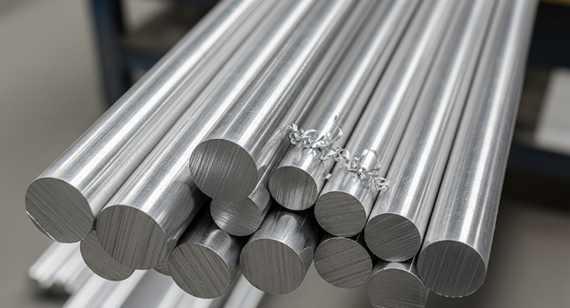
When it comes to CNC machining, dimensional stability determines how well a material maintains its shape and size during and after cutting. The difference between T6, T651, and T6511 tempers lies mainly in residual stress levels and stress relief treatments.
In short:
Here’s the Dimensional Stability Comparison Table for Aluminum T6, T651, and T6511:
| Temper |
Residual Stress Level |
Machining Distortion Risk |
Stability in Thin-Walled Parts |
Stability in Long Parts |
Overall Dimensional Stability Rating |
| T6 |
High | High – warping likely in deep cuts | Moderate – may deform after finishing | Low – long pieces prone to bending | ★★☆☆☆ |
| T651 |
Low | Low – maintains shape in tight-tolerance machining | High – ideal for precision work | High – stable even in large blocks | ★★★★★ |
| T6511 |
Low | Low – holds form during machining | High – excellent for precision | Very High – best for extrusions and long profiles | ★★★★★ |
When selecting the right aluminum temper for CNC machining projects, it’s important to balance strength, stability, and machinability. While 6061-T6, 6061-T651, and 6061-T6511 share the same base alloy, differences in stress-relief methods and manufacturing processes lead to noticeable variations in cutting performance, part stability, and surface finish quality. Understanding these differences helps manufacturers reduce scrap, improve tolerances, and optimize production efficiency.
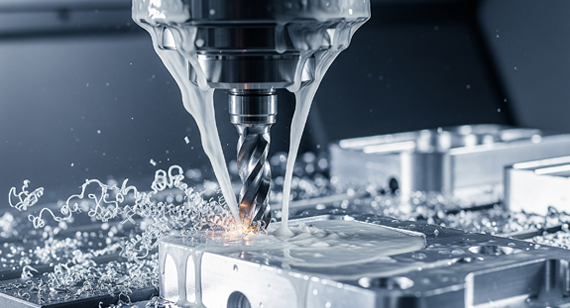
T6 Aluminum
Manufacturing Process: T6 temper is solution heat-treated and artificially aged to achieve maximum strength. However, it is not stress-relieved, meaning internal stresses from processing remain.
Machinability: While T6 offers excellent cutting speeds and good surface finishes, its higher residual stress can cause part distortion during heavy milling or when machining thin-walled components. It’s suitable for smaller parts or where high tensile strength is more important than dimensional stability.
T651 Aluminum
Manufacturing Process: T651 is produced by taking T6 material and mechanically stretching it to relieve internal stresses before aging. This step significantly reduces the risk of warping.
Machinability: Offers superior dimensional stability during CNC machining, making it ideal for tight-tolerance, large, or high-precision parts. Cutting speeds and surface finish quality are similar to T6, but part rejection rates are lower due to reduced distortion.
T6511 Aluminum
Manufacturing Process: T6511 is similar to T651 but is specifically made for extrusions. It is stretched and straightened after extrusion to improve straightness and relieve stress.
Machinability: Provides excellent stability for long profiles and linear components. Particularly well-suited for aerospace rails, marine frames, and structural supports where length accuracy is critical. Cutting behavior is comparable to T651, but workholding and fixturing are easier because of improved straightness.
Here’s the comparison table for Aluminum T6, T651, and T6511: Machinability and Manufacturing Differences:
| Temper |
Manufacturing Process |
Machinability |
Best Applications |
| T6 |
Solution heat-treated and artificially aged; no stress relief | Excellent cutting speeds and good surface finishes; higher residual stresses may cause distortion during machining | Small parts, high-strength applications, where dimensional stability is less critical |
| T651 |
T6 material mechanically stretched before aging to relieve stress | Similar cutting performance to T6 but superior dimensional stability; reduced risk of warping | Large, tight-tolerance, high-precision CNC parts |
| T6511 |
Similar to T651 but specifically for extrusions; stretched and straightened after extrusion | Comparable to T651 with added benefit of improved straightness; ideal for long profiles | Aerospace rails, marine frames, structural supports |
Corrosion resistance is a crucial factor when selecting aluminum alloys for CNC machining, especially in industries such as aerospace, marine, and automotive where exposure to harsh environments is common. While 6061 aluminum inherently has good corrosion resistance due to its magnesium and silicon content, the tempering process (T6, T651, T6511) can slightly influence performance. However, the differences are not as pronounced as in mechanical properties or dimensional stability.
T6 Aluminum
6061-T6 aluminum provides good corrosion resistance in most environments, including atmospheric exposure and freshwater. However, due to the lack of stress-relief processing, residual stresses may increase the risk of stress-corrosion cracking (SCC) in highly demanding conditions. It is still widely used for general-purpose CNC machined parts but may require additional surface treatments (like anodizing) for marine or chemically aggressive environments.
T651 Aluminum
Since T651 is mechanically stretched to relieve stress, it offers slightly better resistance to stress-corrosion cracking compared to T6. The stretching process minimizes internal stress concentrations, reducing the likelihood of premature failure in corrosive settings. Thus, T651 is considered more reliable than T6 for structural components and precision CNC parts that must perform in variable environmental conditions.
T6511 Aluminum
T6511 shares similar corrosion resistance with T651, as both undergo stress-relief stretching. However, because T6511 is specifically used for extrusions, it is often chosen for long profiles exposed to marine or industrial environments. When paired with protective coatings, anodizing, or conversion coatings, T6511 extrusions offer outstanding long-term durability.
Summary:
Here’s the Aluminum T6, T651, and T6511: Corrosion Resistance Comparison table:
| Temper |
Corrosion Resistance |
Stress-Corrosion Cracking (SCC) Risk |
Best Use Cases |
| T6 |
Good in general environments (atmospheric, freshwater) | Higher – residual stresses make it more prone to SCC | General CNC machined parts, automotive components, indoor structures |
| T651 |
Good, with improved reliability | Lower – stress relief reduces SCC risk | Aerospace structural parts, precision CNC machining, load-bearing components |
| T6511 |
Good, similar to T651 | Lower – stable under extrusion form | Marine frames, aerospace rails, long extruded profiles, industrial structures |
When choosing between aluminum T6, T651, and T6511 for CNC machining, cost and availability play a decisive role alongside mechanical and corrosion-resistant properties. Each temper is produced through different processing steps, which affect not only performance but also price and market accessibility. Understanding these differences helps manufacturers and buyers optimize material selection for both budget and lead time.
T6 Aluminum
6061-T6 aluminum is the most widely available and generally the least expensive of the three options. It is produced in large volumes, making it easy to source in sheets, plates, bars, and tubes. Its lower cost and broad distribution make it the default choice for CNC machining services where extreme stress relief or extrusion form isn’t critical.
T651 Aluminum
6061-T651 aluminum undergoes additional stretching for stress relief, which adds extra processing cost compared to T6. As a result, T651 is slightly more expensive but still readily available, especially in plate form. For CNC machining factories that require high dimensional stability and reduced residual stresses, the modest price difference is often justified.
T6511 Aluminum
6061-T6511 aluminum is specifically used for extruded profiles, such as rods, bars, and complex shapes. Its cost is usually comparable to or slightly higher than T651, depending on profile complexity and supplier. However, availability can vary, as not all suppliers stock the full range of extrusion sizes. It is often selected when long, stable profiles are required for aerospace or structural applications.
Summary:
Here’s the Aluminum T6, T651, and T6511: Cost and Availability Comparison table:
| Temper |
Cost Level |
Availability |
Typical Forms |
Best Use Cases |
| T6 |
Lowest cost | Very high – widely available worldwide | Plates, sheets, bars, tubes | General CNC machining, automotive, structural components |
| T651 |
Slightly higher than T6 (extra stress-relief process) | High – commonly stocked, especially in plate form | Plates, blocks | Aerospace, precision CNC machining, load-bearing applications |
| T6511 |
Comparable to or slightly higher than T651 | Moderate – depends on extrusion profile demand | Extruded bars, rods, complex shapes | Aerospace rails, marine structures, industrial profiles |
6061 aluminum alloys in T6, T651, and T6511 tempers are widely used across industries because of their unique balance of strength, machinability, corrosion resistance, and dimensional stability. However, each temper offers different advantages depending on the specific application. By comparing their suitability in aerospace, automotive, construction, marine, and electronics, manufacturers can determine the most effective choice for performance, cost, and reliability.
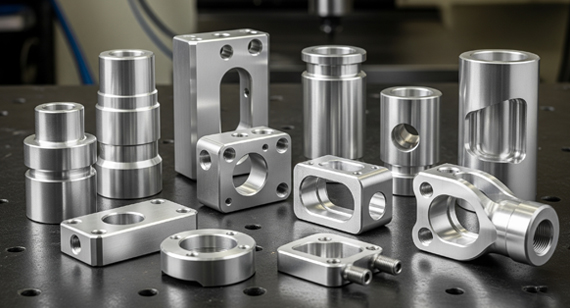
Aerospace
In aerospace engineering, precision and dimensional stability are critical. 6061-T651 and 6061-T6511 are often preferred because they undergo stress relief, reducing the risk of warping after machining. These tempers are commonly used in structural components, fuselage frames, and aerospace rails. While T6 is strong and widely available, its lack of stress relief makes it less suitable for high-precision aerospace assemblies.
For automotive parts where cost efficiency and machinability are priorities, 6061-T6 is often the go-to choice. It provides a good balance of strength and weight, making it ideal for engine components, brackets, and performance parts. T651 may be chosen for parts requiring tighter tolerances and stability, while T6511 is useful in extruded automotive profiles such as chassis rails and suspension arms.
Construction
In construction, strength-to-weight ratio and cost are major considerations. 6061-T6 is widely used for structural beams, scaffolding, and architectural applications due to its affordability and high availability. For precision load-bearing structures, 6061-T651 may be preferred. T6511 extrusions are also employed in frameworks and support structures that require both strength and corrosion resistance.
Marine Corps (Marine Applications)
Marine environments require strong corrosion resistance. 6061-T6 is commonly used in boat fittings, docks, and marine hardware due to its balance of corrosion resistance and affordability. However, 6061-T651 and T6511 are often chosen for critical structural marine parts, such as masts, rails, and hull components, where stress relief ensures long-term dimensional stability under harsh conditions.
In electronics, aluminum is valued for its thermal conductivity and machinability. 6061-T6 is often used for heat sinks, housings, and enclosures due to its wide availability and low cost. 6061-T651 can be preferred in precision-machined electronic components that demand tighter tolerances. 6061-T6511 extrusions are less common but may be used for custom profiles in electronic housings or structural supports.
Here’s the comparison table for Aluminum T6, T651, and T6511: Application-Specific Properties:
| Application |
6061-T6 |
6061-T651 |
6061-T6511 |
| Aerospace |
Strong and cost-effective, but lacks stress relief, making it less ideal for precision aerospace components. | Stress-relieved; excellent dimensional stability; used in fuselage frames and structural parts. | Stress-relieved extrusions; stable for rails, aerospace profiles, and precision structures. |
| Automotive |
Widely used for brackets, engine parts, and performance components; good strength-to-weight ratio and affordability. | Better for parts requiring tight tolerances and machining precision. | Suitable for extruded automotive profiles like chassis rails and suspension arms. |
| Construction |
Common in beams, scaffolding, and architectural structures; economical and widely available. | Chosen for load-bearing structures needing higher dimensional stability. | Ideal for extruded frameworks and support structures with strength and corrosion resistance. |
| Marine |
Good corrosion resistance; used in boat fittings, docks, and marine hardware. | Stress relief improves long-term stability; suitable for critical marine parts like masts and hull components. | Reliable for extruded parts such as rails and marine structural profiles. |
| Electronics | Used for heat sinks, housings, and enclosures; affordable and easy to machine. | Preferred in precision-machined electronic housings needing tight tolerances. | Used for custom extruded profiles in housings or support frames. |
Selecting the right temper of 6061 aluminum is a critical decision in CNC machining. Different tempers—such as T6, T651, and T6511—affect not only the material’s strength but also its dimensional stability, machinability, corrosion resistance, and cost. Choosing the wrong option can lead to performance issues, reduced service life, or higher production expenses. By understanding each property, manufacturers and engineers can make the most cost-effective and performance-driven decisions for their projects.
Strength Requirements
Dimensional Stability
Machinability
Corrosion Resistance
Cost and Availability
Here’s a clear comparison table for Choosing the Right Temper for Your Aluminum CNC Machined Part Project:
6061 Aluminum Tempers: Selection Guide
| Criteria |
6061-T6 |
6061-T651 |
6061-T6511 |
| Strength Requirements |
Highest strength; ideal for structural and load-bearing applications | Nearly same strength as T6 with added stress relief for reliability | Strong and versatile, especially for extruded profiles |
| Dimensional Stability |
May warp due to residual stresses during machining | Excellent stability; stress relieved via stretching | Good stability; stress relieved, optimized for extrusion shapes |
| Machinability |
Machines well but distortion risk in tight tolerances | Best machinability for precision CNC machining; minimal movement during cuts | Good machinability for extruded shapes, though finishing may need extra work |
| Corrosion Resistance |
Excellent corrosion resistance; suitable for marine & outdoor applications | Same as T6; preferred in aerospace and marine for long-term durability | Same as T6; widely used in marine, aerospace, and complex extrusion projects |
| Cost & Availability |
Most affordable and widely available | Slightly higher cost due to stress-relief process; widely available | Similar cost to T651 but dependent on extrusion demand; best for special parts |
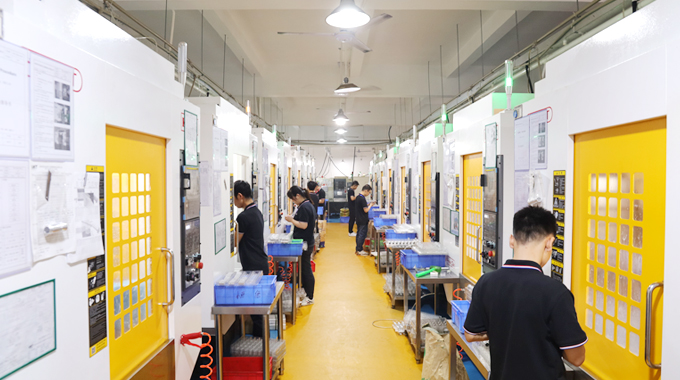
When it comes to CNC machining projects, choosing the right 6061 aluminum temper—whether T6, T651, or T6511—depends on balancing strength, stability, machinability, corrosion resistance, and cost.
Ultimately, the right temper ensures not only better performance and durability but also cost efficiency for your CNC machined parts. Partnering with professional CNC machining services or experienced CNC machining factories can help you make the optimal material selection and achieve superior-quality results.
1. What are the different tempers of 6061 aluminum?
6061 aluminum is available in several tempers, including O (annealed), T4, T6, T651, and T6511. Each temper offers a different balance of strength, machinability, corrosion resistance, and dimensional stability, making them suitable for different CNC machining applications.
2. What is the difference between T6 and T651 tempers?
Both T6 and T651 are solution heat-treated and artificially aged, but T651 undergoes stress-relief stretching, which reduces residual stresses. This makes 6061-T651 more dimensionally stable and better for precision CNC machined parts.
3. What are the different temper grades of aluminum?
Aluminum tempers are categorized as F (as fabricated), O (annealed), H (strain-hardened), W (solution heat-treated), and T (thermally treated), with subcategories like T4, T5, T6, and T651, depending on processing methods.
4. How is 6061 aluminum tempered?
Tempering involves solution heat treatment, quenching, and artificial aging. For example, 6061-T6 is solution heat-treated, quenched in water, and aged to maximize strength.
5. What is the difference between T4 and T6 tempers? Which is better, T4 or T6?
For CNC machining, T6 is generally better, but for bending or forming, T4 may be preferred.
6. What is the difference between T5 and T6 aluminum tempers?
T6 generally offers higher strength than T5.
7. What is the difference between T6 and T73 tempers?
T73 is often used in aerospace where corrosion resistance is critical.
8. How can you determine the temper of aluminum?
Temper is usually marked on material certifications and supplier datasheets. Physical testing (hardness or tensile strength) can also help verify the temper.
9. What is the difference between 6061-T6 and 7075-T6 aluminum?
6061-T6 is common for general CNC machining; 7075-T6 is often used in aerospace and defense.
10. What are the disadvantages of 6061 aluminum?
While versatile, 6061 aluminum has lower strength than 7075, limited fatigue resistance, and can deform under very high loads.
11. What is the most common 6061 temper?
6061-T6 is the most widely used temper due to its excellent balance of strength, corrosion resistance, and availability.
12. How is the tempering temperature calculated?
Tempering involves precise heat treatment cycles based on aluminum grade and desired properties, usually controlled between 160–190°C (320–375°F) for aging.
13. What is the optimal tempering temperature for aluminum bending?
For bending, softer tempers like 6061-O or 6061-T4 are optimal, as they allow more ductility before cracking.
14. What is the difference between T651 and T6511 tempers?
Both are stress-relieved versions of T6.
Both improve dimensional stability in CNC machining.
15. What is the T4 temper?
T4 means solution heat-treated and naturally aged. It is softer and easier to form than T6.
16. What is the difference between 6061-T6 and 6061-T651 aluminum?
Both share the same strength, but T651 undergoes stress relief, making it more stable for precision machining, especially for larger parts.
17. What is the difference between 6061-O and 6061-T6?
18. What is the difference between 6061-T6 and T7?
